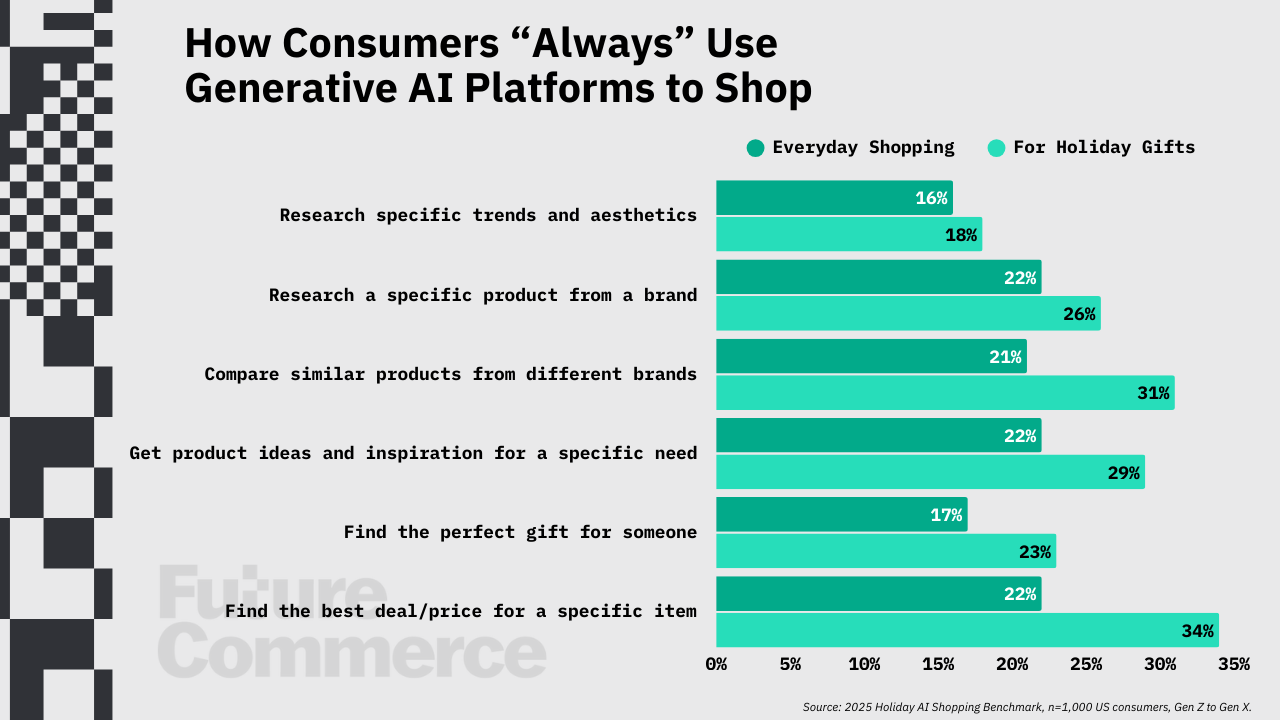
The Genre Defense: Marketing Homage and Cognitive Biases

.png)
As you may know, we’ve been discussing the difference between Dupes, Reps, and Copycats here lately; and due to mere exposure bias, I’m now seeing them everywhere.
Which is why I took notice when this ad popped up in my IG feed from Feat Clothing. Feat is popular for selling $128 hoodies, and until recently, did so unapologetically.
The ad copy reads, in part:
It's not cheap.
We know.
$128 is a lot of money.
Especially for a hoodie.
We could make them cheaper.
But then they would be cheap.
What is not apparent from the image alone is that the ad is a derivative work that builds on the copycat nature of publicity.
Brands have always paid homage to each other in their works, including the likes of BMW and Mercedes taking shots at each other. What programmatic ads allow for is siloed experiences with a customer that accelerate derivative works. This outright copycat behavior might be considered distasteful, if they were ever seen outside of the confines of algorithmic ad targeting.
Instead, they go largely unnoticed by the general population, until they’re so commonplace they’re unavoidable.
Which begs the question: when do copycat campaigns transcend into a genre? Where is that tipping point? 10 brands? 20? 200?

The Genre Defense is a term that we coined to explain — not the behavior — but the defense of the behavior of copycatting an ad. Atoms may have been the first to use this format in DTC land, but not the first, period. Hormel Foods preceded it by nearly 80 years in its 1940s-era advertising.
When imagery — a meme, an ad format — is repeated and perpetuated often enough, it becomes a genre unto itself. We’ve explored how critique and genre are markers of emergent art forms in the past, but the defense of the behavior here is what we’re examining.
As marketers, we can level critique on the ad based on our own points of view as operators. Those points of view are shaped by our biases and your prior experiences. Some biases in the DTC community that may cause us to critique this ad might change our points of view:
- Confirmation Bias: Pre-existing negative beliefs about “premium mediocre,” “bland,” or faux-luxury goods may focus on the high price mentioned in the ad copy, interpreting it as evidence that Feat is overpriced and not worth the cost.
- Halo Effect: The ad copy's emphasis on quality may overshoot its intended purpose, causing the reader to attribute the pricing as a misdirection; a function of greed rather than the quality of materials and craftsmanship.
- Negativity Bias: Some marketers may focus more on the potential drawbacks of your ad copy, such as the high price and implied exclusivity
- Cryptomnesia: The implication that the ad was original vs. copied may lead a marketer to believe that Feat lacks originality and creativity. This bias occurs when people mistakenly believe they have generated a new idea when it is actually a memory of a previously encountered idea.
- Aesthetic-Usability Effect: The text-heavy ad might cause marketers to believe that the ad is cluttered or difficult to read, potentially impacting the perceived usability and effectiveness of the ad.
- Representativeness Heuristic: The criticism that the picture featured in the ad isn't even a hoodie could lead marketers to question Feat’s attention to detail and relevance. If the image is not representative of the product, other aspects of Feat may also be misaligned.
Perpetuated copycat behavior breeds more of itself and justifies its existence by the sheer volume and velocity by which it spreads. And that volume is undeterred by what people on Twitter think, biases and all.
Let’s be clear, customers don’t care about marketer biases. Conversation on Twitter has little impact on how people think of Feat, if any at all; especially now as Twitter’s platform falls into decline.
Setting hoodies aside for a moment, the same criticisms are often examined amongst users of eCommerce software — which often get a bad rap on the bird app.
Yotpo, Magento, and Recharge all have received their share of ire on the doom box; and I’ve been an ardent defender of all three in recent history. Why? Because customers generally don’t care what marketers think about a product, much less what they’re gossiping about in their echo chambers.
I recently attended Recharge’s annual user conference, ChargeX. What I heard over and over again was that customers (in this case of a software product) want to connect with other customers to share their problems and hear about potential solutions. They want to see roadmaps, and understand how their dollars are funding future solutions. They want to ideate. They want to connect.
Those customers had little in common aside from being consumers of the same software at the same user conference. That, and, they don’t care about drama on the internet and the sentiment of other marketers; or even podcasters and newsletter writers.
Not one paying customer that I spoke to was aware of Recharge, Yotpo, or any other software platform being berated on social media.
Successful companies unplug from the drama, put their head down, and do good work. And maybe sometimes borrow from each other.
Surprising? Hardly. But I’m biased.
— Phillip
P.S. This week on the podcast we sit down with the king-of-long-form and self-professed “most handsome man in Oregon,” Aaron Orendorff, to talk about the value of tactical content, pseudo-religious brand playbooks, and the value of questioning best practices. It’s one of my favorite episodes of Future Commerce ever. I think you’ll love it — check it out, wherever podcasts are found (or ya know, click right here) for Episode 302: “Ignorance Plus Desperation”.

Simon Says “Divest” Simon Property Group CEO, David Simon, recently noted in their Q1 earnings call that their investments in owned retailers are beneficial, but may not remain for long and could end within 5 to 10 years. In 2023, Simon traded ownership in Eddie Bauer for a stake in Authentic Brands Group, further diversifying its investments in mall-centric retail, which now includes ownership in J.C. Penney, Sparc Group, Authentic Brands Group, and Rue Gilt Groupe.
IPO and Expansion. Klaviyo is rumored to be preparing for its initial public offering (IPO) reports The Information. After years of partnering with Shopify, the company is looking to diversify its customer base by focusing on larger merchants.
More Sights & Sounds. Shopify laid off 20% of its workforce and sold its logistics business to Flexport in an all-stock deal. Macy’s is still testing its off-mall strategy and plans to open 5 more locations in strip malls while closing larger mall locations, as Market by Macy’s and Bloomie’s are out-performing other retail models within the company. Peloton will relaunch in May in an attempt to reposition the brand, following a settlement with Dish Technologies.


Luxury Meets Reebok. Farfetch Limited has announced a European partnership with Reebok, in an effort to drive up revenue for Farfetch. Reebok’s European eCom sites have also been replatformed by Farfetch Platform Solutions. Which makes us ask — is Reebok cool again?
Hey… Rude. Since acquiring Hey Dude, Crocs has entered into a retail partnership with Foot Locker Inc. stores, which includes Champs Sports and Kids Foot Locker, to sell the Hey Dude brand. This does not change prior plans to shutter 400+ mall locations over the next 4 years, but we can only hope that this slows down the presence of the fugly boat shoe.

Nature Noodles. Somewhere near a creek outside Old Bridge, New Jersey, 500 pounds of pasta was mysteriously discovered after being dumped and abandoned in the woods. Reports on whether it was cooked or just softened by rain are conflicting, but what is known at this time is that there were no less than 15 wheelbarrow loads of noodles found in the wild. The incident is currently under investigation.


The “Swingularity”. The Writers Guild of America is on strike, and Twitter went wild after someone suggested that “writing work doesn't matter anymore, actually... ChatGPT can just do it.” Meanwhile, a group of stocks chosen by ChatGPT performed better than popular human-composed investment funds in the U.K. Bing told a user “you’re married, but you’re not happy,” prompting calls for SwingerGPT bots. AI DJs are generating mixes on Radio GPT by Futuri, and a New York Times writer got ChatGPT’s input on their fashion looks. An AI startup in Canada called Cohere has raised $250 million in funding and plans to compete with ChatGPT. And with our obsession with self-help combined with the lack of personal barriers in asking a computer a question, AI is poised to become our newest lifestyle guru. This New Yorker article suggests that AI could become the next McKinsey & Company.











.svg)
